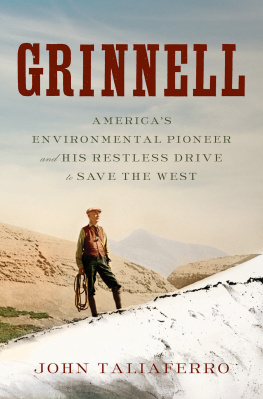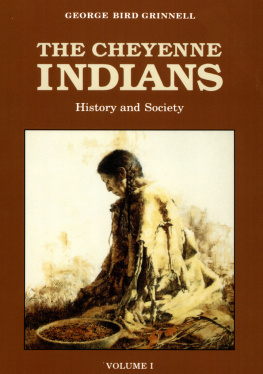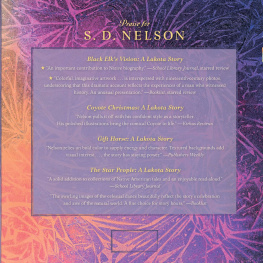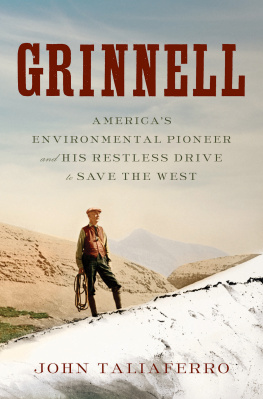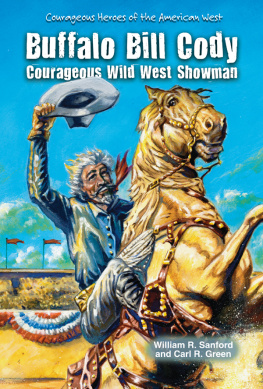CONTENTS

MICHAEL PUNKE serves as the US Ambassador to the World Trade Organization in Geneva, Switzerland. He has also served on the White House National Security Council staff and on Capitol Hill. He was formerly the history correspondent for Montana Quarterly and an adjunct professor at the University of Montana. He is the author of the international bestselling novel The Revenant and Fire and Brimstone: The North Butte Mining Disaster of 1917. His family home is in Montana.
A book is a long haul, so Im grateful for the many friends and family who have supported me along the way. Thanks to Max Baucus, Mike Bridge, Bruce Bugbee, Amy and Sean Darragh, Ken Doroshow, Allen Fetscher, Phil Gardner, Cheryl and Brent Garrett, Mickey Kantor, Jen Kaplan, Peter Lambros, David Marchick, Amy and Mike McManamen, the Miller Family, Bob Pack, Sharon Peterson, Tim and Lori Punke, Peter Scher, Fred Shellenberg, Jo May and Brian Salonen, Monte Silk, Mary and Bill Strong, Kim Tilley, Bev Whitt, Pat Williams, Lynne and Gary Willstein, and Jay Ziegler.
I am again indebted to a great many librarians and archivists for their dedication and expertise. Thanks to the staff at the University of Montanas Mansfield Library and especially to Donna McCrae in the K. Ross Toole Archives. Thanks to Harold Housley at the Yellowstone National Park Archives and to Brian Shovers at the Montana Historical Society Archives.
I have benefited greatly from the work of many scholars who have explored some of the same ground covered in this book, including a few who deserve acknowledgment beyond footnotes. John Reiger, a former head of the Connecticut Audubon Society, helped to ensure the preservation of Grinnells papers and wrote an important book called American Sportsmen and the Origins of Conservation. Duane Hampton, emeritus professor at the University of Montana, gave me a big box of his research about Grinnell, valuable feedback on an early draft of Last Stand, and a great book (his)How the U.S. Cavalry Saved Our National Parkswhich captures this little-known chapter in the history of the U.S. Army. Among the many wonderful books about buffalo, I found Head, Hides & Horns by Larry Barsness to be a particularly comprehensive and readable resource. Thanks to Lee Whittlesey, park ranger and scholar of Yellowstone, for his insights to Grinnell and the history of the park. Whittlesey, it is worth noting, is leading an effort to name a peak in Yellowstone in Grinnells honor a project certainly worthy of broad support. Thanks also to Jack Reneau at Boone and Crockett.
For sharing a glimpse of their vision of wild buffalo on the plains, thanks to Sean Gerrity, Scott Laird, and Bill Willcutt at the American Prairie Foundation. Anyone interested in more information about this project should visit www.americanprairie.org or www.worldwildlife.org. Im also grateful to Curt Freese at the World Wildlife Fund for lending a scientific eye to review of this manuscript.
A big thanks to T.J. Kelleher, my editor at Smithsonian Books. Beyond wordsmithing, T.J. helped to shepherd this book with his knowledge of a frighteningly diverse range of topicsfrom eighteenth-century philosophers to the GI tract of a buffalo. Thanks also to Gretchen Crary with Harper Collins.
No one could ask for a better agent than Tina Bennett at Janklow & Nesbit. She has my eternal and heartfelt thanks. Thanks also to Tinas assistant, Svetlana Katz, ever helpful in ways big and small.
For their ongoing support of my writing, Im grateful to Keith Redmon and David Kanter at Anonymous Content.
A special thanks to my parents, Butch and Marilyn Punke, for having the good sense to raise their children in the West. My dad took me hunting and fishing from the time I could walkmy first exposure to the beauty of mountains and plains. Like Grinnell, my father is part of the long tradition of sportsmen-conservationists. He was giving slide programs about protecting the environment to audiences in small-town Wyoming back in 1973.
Thanks most especially to my family, who turned the research for this book into memorable adventures. Thanks Bo, for helping to dodge that big bull buffalo on Indian Creek, for exploring Soda Butte, and for sharing a wet tent. Thanks Sophie, for climbing the buffalo jump in Madison Valley, for digging through dusty documents in the Yellowstone Archives, and for sharing a cold tent. And thanks Tracifor the VW, the CMR, and your birthday in snowy Yellowstone.
The Revenant
Fire and Brimstone: The North Butte Mining Disaster of 1917
The party started from New Haven late in June, bound for a West that was then really wild and wooly.
GEORGE BIRD GRINNELL, Memories
T he adventure that changed the course of George Bird Grinnells life began with a train, and the path of the train, as it crossed the plains in the summer of 1870, was blocked by buffalo.
The new transcontinental railroad, like the wagon trails that preceded it, hewed to the valleys. Far from featureless, as the Great Plains is frequently described, it is a region whose signature characteristic is so pervasive as to overwhelman openness so vast that the newcomer has no antecedent to place it in context. Coming, as Grinnell did, from the East, with its hemmed-in horizons and creeping green, arrival on the stark prairie was a shock to the system, an obvious demarcation of a place that was new. It was also, in the summer of 1870, a place that was wild.
As the train glided along the tracks, Grinnell heard the sudden screech of metal brakes and excited shouts. Looking out the window, he saw a herd of buffalo. After a brief delay, the herd wandered off and the voyage continued. Later, though, the train was halted a second time by another herd. We supposed they would soon pass by, remembered Grinnell, but they kept coming in numbers so great that they could not be computed. It took three hours for the herd to cross the tracks. In the early days of the railroad, the problem of buffalo blocking tracks was so common that engines were sometimes equipped with a device that shot out steam to scatter the herd.
Grinnell and his young companions certainly looked prepared for adventure. Each of the young men carried a shiny new Henry repeating rifle, a pistol, bandoleers of cartridges, and a Bowie knife. Never mind that few had any experience with weapons (Grinnell was one who did). In Omaha, they had walked out onto the prairie to try our fire arms. Grinnell, at least, was under no illusion: The members of the party were innocent of any knowledge of the western country, but its members pinned their faith to Professor Marsh.
We supposed they would soon pass by, but they kept coming
in numbers so great that they could not be computed.
A Hold-Up on the Kansas-Pacific, 1869, by Martin Garretson.
Courtesy of the National Museum of Wildlife Art.
Eyes to the West: George Bird Grinnell in his early twenties.
Next page

